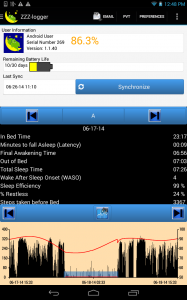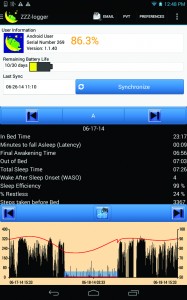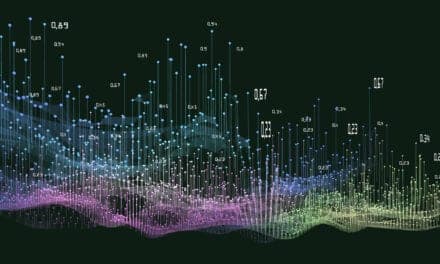A new generation of sleep medicine software boasts features such as automated smart phone notifications that both improve outcomes and lower labor.
Sleep apnea patients who use 3B’s iCode Connect can expect automated phone calls for their PAP data using interactive voice recognition, all without physicians or durable medical equipment companies (DMEs) having to lift a finger.
“We’ll ask: ‘Are you ready to do that now? If you’re not, let me know and I’ll call you back,’” says Joe Toth, national director of sales and marketing for the cloud-based information management company. It’s scenarios just like this one that are leaving a lasting impact on the sleep subspecialty.
Recent studies, including those conducted by Philips Respironics and Umbian Inc, show that communication via software is contributing to sleep patient compliance while decreasing coaching labor.
Umbian, a subsidiary of ResMed, found a 59% reduction in labor associated with intervening and coaching patients on CPAP therapy when using its U-Sleep compliance management system. As the number of people using CPAP to treat sleep apnea increases, the ability to efficiently and effectively monitor and manage the therapy becomes a critical aspect of healthcare, the company says.
“Patients, like all consumers, are becoming increasingly comfortable with personalized digital messaging that nudges them on their desired path, whether from a personal fitness tracker or from a prescribed therapy device,” says Rob Levings, vice president of ResMed Healthcare Informatics. “Automated messaging is effective for a significant percentage of the patient population, but for those who still require manual intervention, the time freed up for a professional can allow them to manage the remaining patients by exception.”

According to a new study released at SLEEP 2014, patients using the SleepMapper mobile app and web-based solution achieved a 22% higher PAP therapy adherence rate than non-users.
Philips’ research found that patients using its SleepMapper mobile app and web-based solution achieved a 22% higher adherence rate for PAP therapy than nonusers.
“Our software program, SleepMapper, mainly helps the patients help themselves,” says Dr Mark Aloia, senior director of global clinical research for Philips Healthcare. “That has a huge upside for care providers as they then have more time to manage those patients who may need extra attention. In a time when efficiencies mean everything, this is critical.”
He says portable health monitors should go beyond giving feedback. They also should assist in goal setting and use patient-specific motivators to help drive changes in health behavior.
“We have used various theoretical models to guide us on our journey to offer assistance in creating change in our patients, but the patients have the final say on whether or not to change,” Aloia says. “The right approach can definitely help, and we believe that we have begun to put together an approach, backed by science, that will create lasting change in our customers.”
IndigoArc, a cloud-based software provider for sleep centers, has seen similar results among its clients. Productivity is up with those using software, and it allows providers to keep patient information together in one place.
“The biggest advantage is that you don’t lose track of what you are doing with a patient,” says Rajiv Dewan, Indigo Arc managing partner. “The patients are also comfortable because they feel they are deeply involved in their own care.”

The simplicity of Zzz-Logger software makes it a great choice for practitioners of cognitive behavioral therapy for insomnia.
Ambulatory Monitoring president Tom Kazlausky says it’s valuable for patients to have software at their fingertips. With his company’s Zzz-Logger, patients can send sleep parameters—total sleep time, sleep latency, wake after sleep onset, sleep efficiency, and restlessness—via e-mail to their provider of cognitive behavioral therapy for insomnia.
“The real upside to actigraphy software on the patient’s phone is it lets them review and discuss their last night’s sleep with a sleep professional while the circumstances surrounding it—their sleep environment, what they ate, their emotional and mental state—are still fresh in their mind,” Kazlausky says.

Somnoware connects multiple stakeholders, including physicians, diagnostic providers, testing facilities, DMEs, and patients, using one software solution.
Somnoware’s chief strategy officer Matthew Mammen adds, “I am 100% in agreement with them that using such a tool increases compliance.”
But he says there are obstacles software platforms must consider, such as making it easy for patients once they are signed on to use a specific CPAP therapy. That’s something he took into consideration as he started developing and marketing Somnoware’s new device- and manufacturer-agnostic solution that was released in alpha and should be more widely available by the end of the year.
“We have a million apps on our phone,” Mammen says. “If a doctor’s office asks you to remember a user name and password, that’s going to be difficult to figure out, so we are taking that into consideration in our app. This software has to do a little more than just engage; we have to communicate since our phones can send messages and do more than ever before—via text, voice automated calling.”
All software should also be easily customizable, says Praxis’ Molly Robbins. She says physicians who use Concept Processor, which is built into the chart notes and also the patient portal, can choose display and functionality of the portal based on any patient characteristic.
“Plus, doctors can add and alter the parameters of what’s displayed on the portal as they gain new knowledge, as anything changes in their practice, or based on patient preferences,” she says.
In the future, communication among patients could be the norm for the sleep industry. Most companies say they are either already employing some type of social interaction or have plans to soon operate more through social media. The trend has taken off with consumer apps like MapMyRun, which allows users to post goals and achievements on social media.
“We think this trend is going to strengthen in the healthcare systems,” says IndigoArc’s Dewan, noting that one major concern is HIPAA compliance. “We think allowing patients to better control their own data is a positive trend, and something that will better involvement of patients’ social support systems in patient care. This will only increase efficacy of the treatment and lead to better outcomes. The trick is to facilitate this while protecting privacy and security.”
Contributing writer Stephanie Forshee is inspired to try consumer-facing software with built-in notifications to see how it will help her reach her fitness goals. Send article questions and comments to [email protected].
Additional Information
Watch an overview of U-Sleep on the company’s YouTube channel or embedded above.
Watch the professional’s introduction to SleepMapper on Philips Respironics’ YouTube channel or embedded above.





